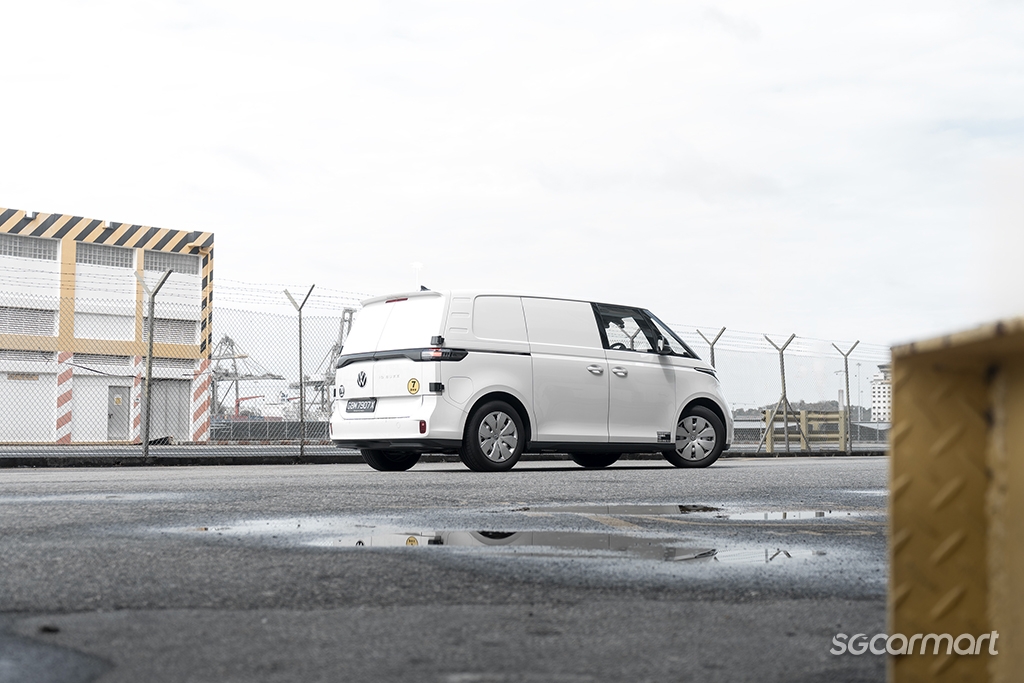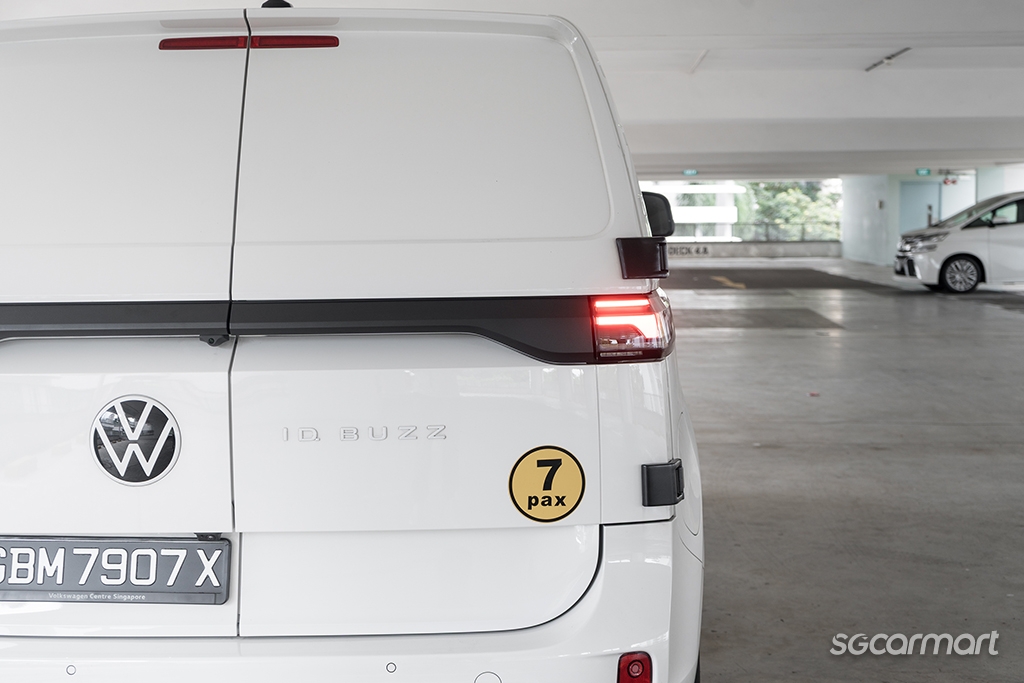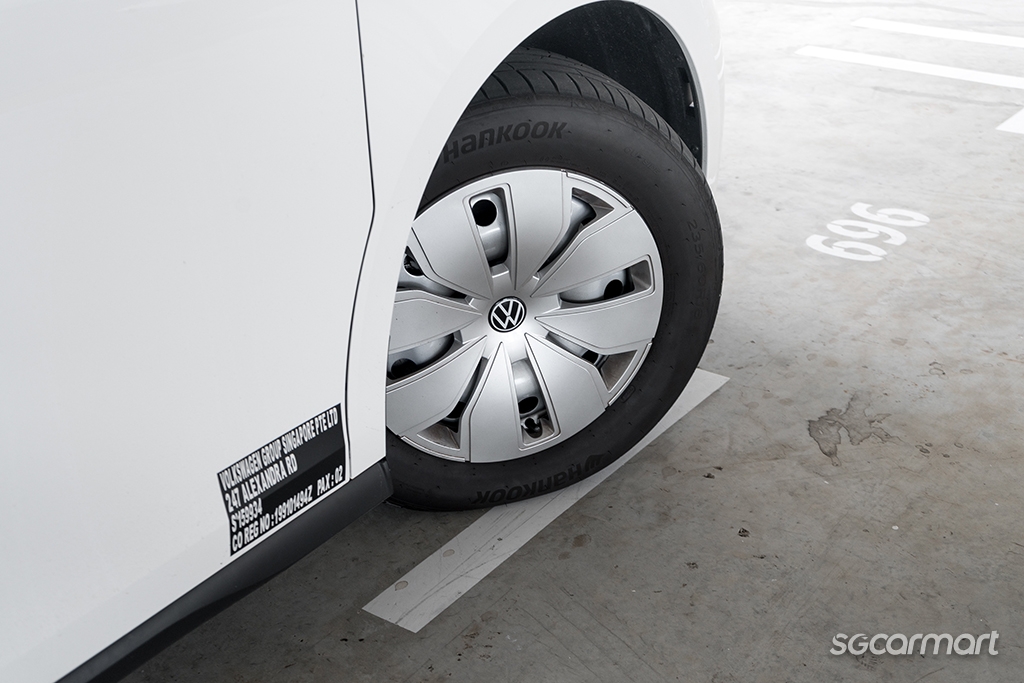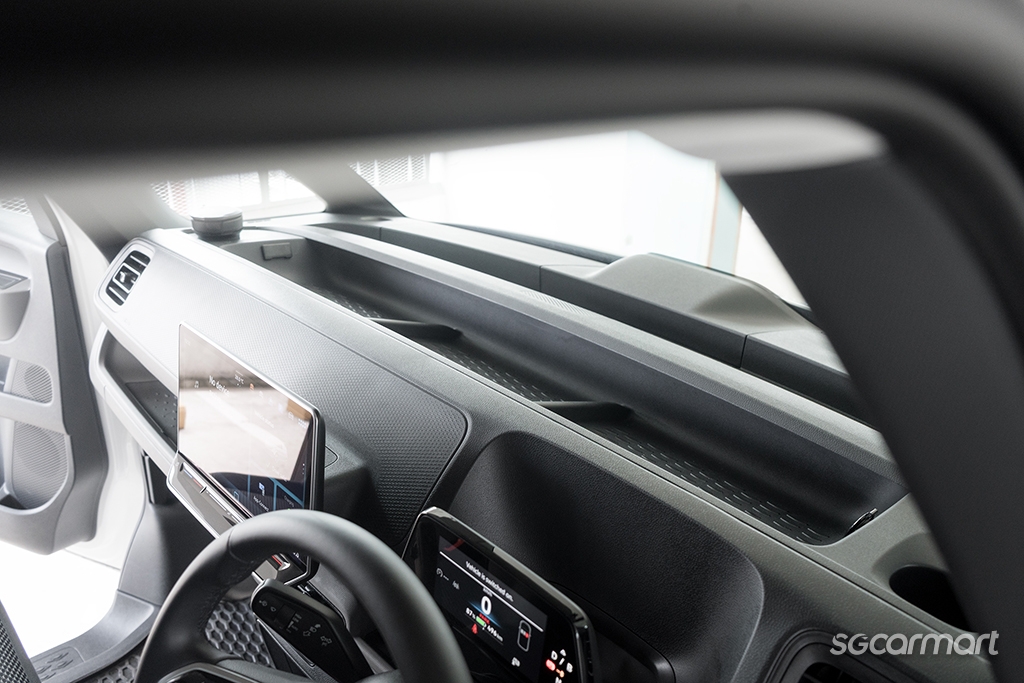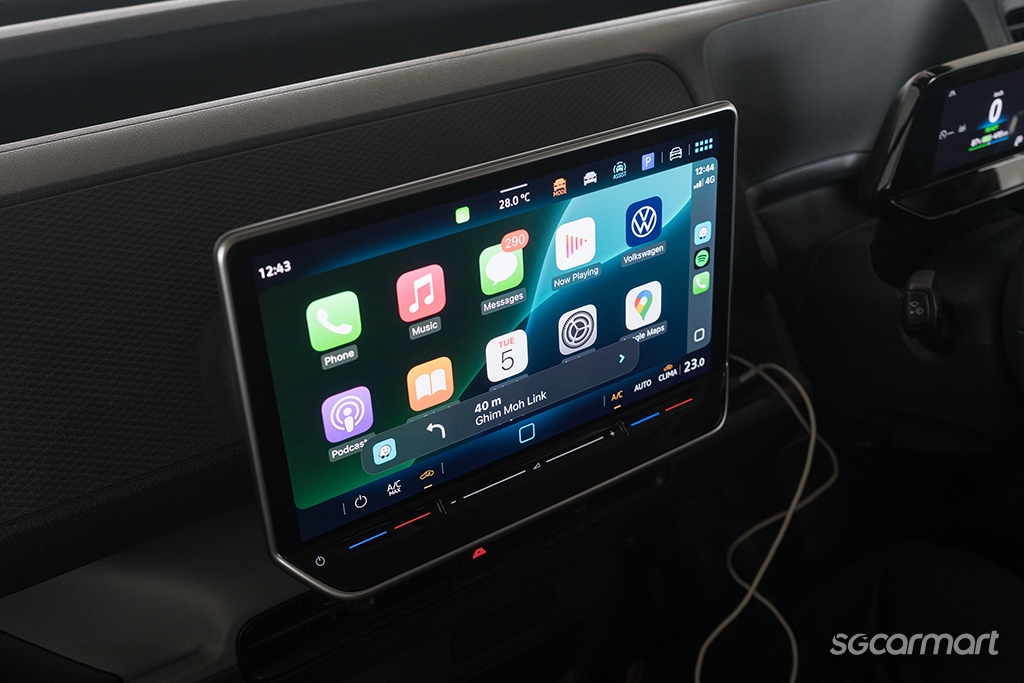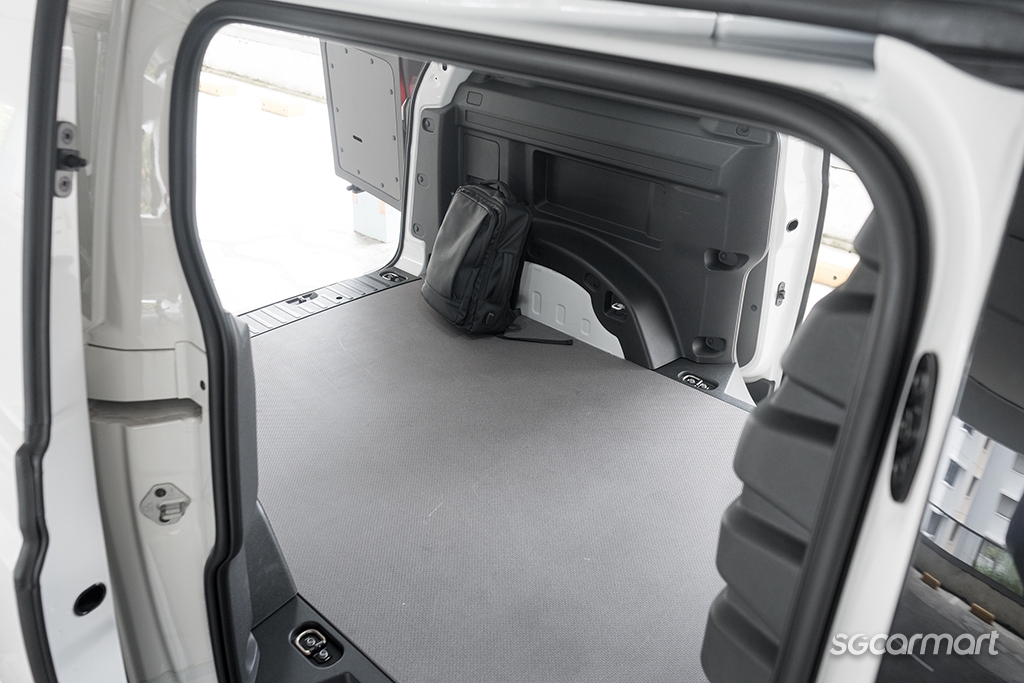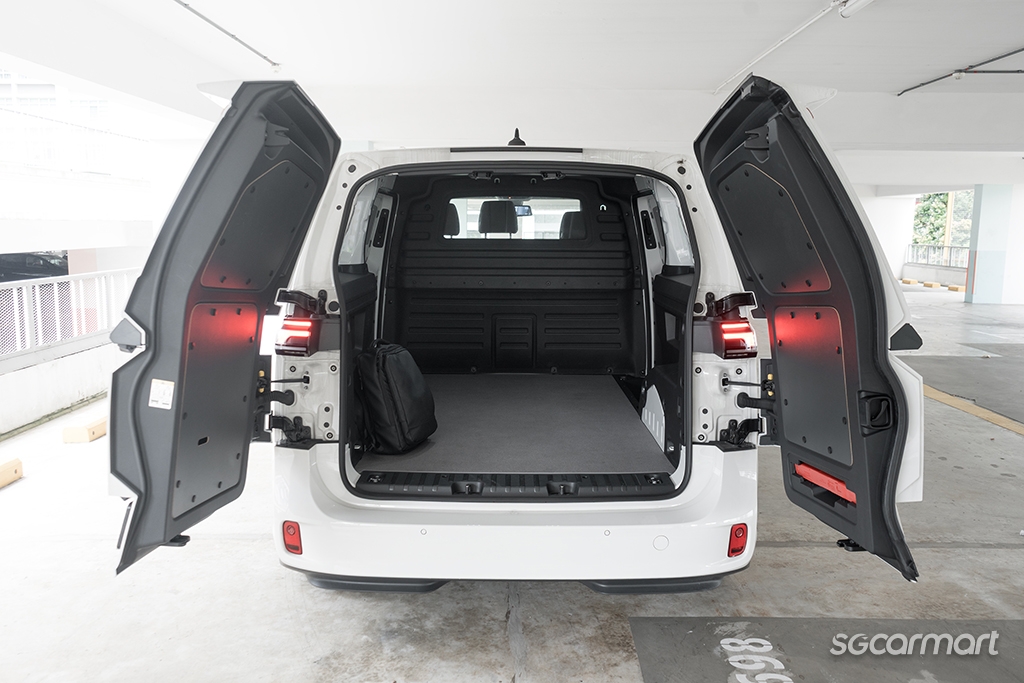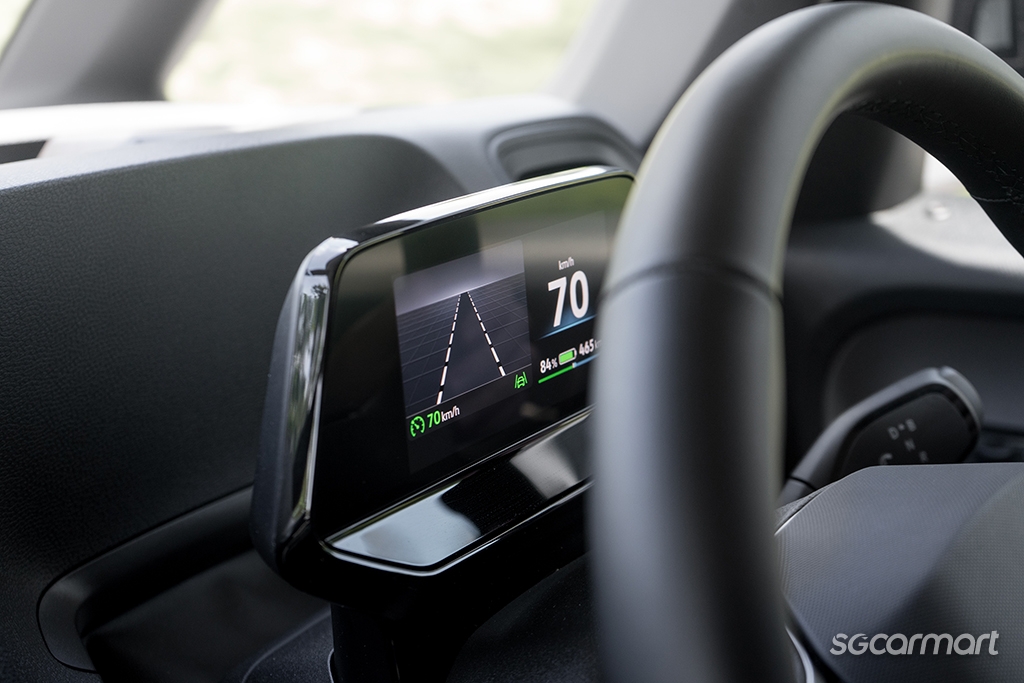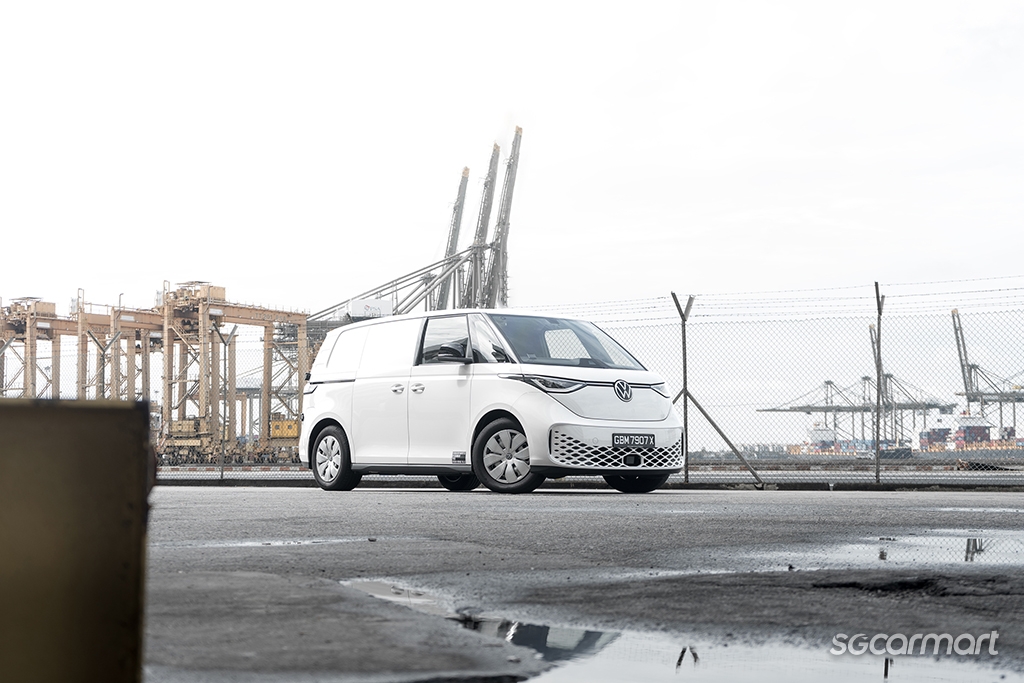Volkswagen ID. Buzz Cargo 79kWh Review
19 Aug 2025|4,095 views
What We Like
Car-like driving manners
Comfortable and modern cabin
Impressive range
Arguably the most charming electric van out there today
What We Dislike
Doesn’t boast the most generous payload nor carrying capacity for its size
No - your eyes aren't fooling you. That's the Volkswagen ID. Buzz you're looking at, just with its rear seats yanked out, and panelled all over now with metal instead of glass.
When Volkswagen laid out plans to bring the #vanlife back with the reincarnated, all-electric successor to its timeless Kombi, it ostensibly didn't just have big families with a good sense of humour on its mind; business-owners were part of the target audience too. Enter: The ID. Buzz Cargo.
Alright, what are the first telltale signs that this is not your normal Buzz?
This Cargo variant makes it clear that it means business (as in zippy delivery runs) first and foremost, of course, with the complete omission of any rear windows. Because its mission is to carry cargo and not humans, that electro-chromatic panoramic roof - regularly hyped up by Volkswagen to be the largest ever fitted to any of its vehicles - has been removed too.
On this particular unit, side-hinged barn doors at the rear inevitably force the ID. Buzz Cargo to lose its full-length light bar, but it's not a bad trade-off for the extra utility these provide. The consequent off-centre placement of the license plate also gives its rear mien a more cartoonish air.
The Cargo variant also has its rear light bar removed (at least on this trim with the barn doors), and sports more utilitarian rims
There are other cosmetic elements that speak to its more pragmatic intentions.
On this entry-level trim, you don't get dual-tone paintwork from the factory, for instance, while the aesthetic of those tin-like rims is less 'neo-retro' (a la those on the passenger variants); more 'modern-workhorse'. But make no mistake: This is still as visually appealing as panel vans come today. Even the futuristic, alien-like Maxus eDeliver 5 can't hold a candle to it.
There are surely changes to the interior too?
The front quarters, likewise, have been put through a significant overhaul.
It speaks to the ID. Buzz's impressive width that a third middle seat fits nicely up front (the delightful 'Buzz Box' detachable centre console, though, is sadly no longer here). Elsewhere, a smattering of handy features - cupholders, storage spaces, hooks - have landed to keep the ID. Buzz Cargo thoroughly useful for chucking receipts/invoices, cups of coffee, and more on long days spent commuting around the island.
This cabin may be more functional, but retains a modern air thanks to its large and responsive 12.9-inch infotainment touchscreen
Amidst these more functional trappings, however, the Cargo's car roots shine through in the best way possible. Most delightful is its large 12.9-inch infotainment touchscreen, which is exactly the same hyper-modern sort that you'll find on the latest of Volkswagen's passenger car models including the Mk 8.5 Golf, the Tiguan, and of course, the ID. Buzz itself (no Cargo-suffix).
The graphics are sharp, the touchscreen is responsive, and the colours are vibrant. Perhaps the only telltale sign of cost-cutting here is the omission of wireless smartphone mirroring functionality - but wired Apple CarPlay and Android Auto are supported no less. That's perfectly acceptable, and still generous, for a commercial vehicle.
Of course, slide the Cargo's two rear doors open, and a cavernous loading bay awaits in place of one or two rows of seats. As mentioned earlier, the presence of barn-style doors at the rear - which can even open up to 180 degrees - makes loading and unloading items a cinch.
The ID. Buzz Cargo is also based off the shorter 'Normal Wheelbase' five-seater variant, so its 3,900-litre hauling capacity is also decent (if not fantastic) for its size. You'll note, though, that its 770kg payload falls slightly short of many other electric contemporaries on the market.
Cool stuff. How does the ID. Buzz Cargo drive?
These slight shortcomings are easy to forgive once you hit the road, where the Cargo's car roots shine through again.
The steering may be a tad too light, but it's quick and accurate - in all, far superior to the experience you get with contemporaries built atop of a van-dedicated platform. With its rear wheels propelled by the same 210kW (282bhp) electric motor as the one on the passenger variants, performance is also brisk. That 70km/h limit will likely feel frustrating to most drivers, considering how easy it is to hit.
Still, it's the Cargo's refinement that is its true calling card.
It's not uncommon to find leaf springs on commercial vehicles, but the Cargo relies on a more sophisticated multi-link rear suspension. While we noted the ride quality to be just about passable on the seven-seater ID. Buzz, it's more than pliant when assessed as a commercial vehicle - and this was without a full load of cargo too. Cruise along at the stipulated commercial vehicle speed limit, and you'll find the ride comfortable, and remarkably silent.
Its range also stands out among the electric vans we've experienced so far. Powered by a 79kWh battery, our driving patterns (based on a short stint) would have returned more than 450km on a full charge. Again, this was without maxing out its 770kg payload - but it's worth remembering too that you're unlikely to be gunning it around as wildly and eagerly as you would the passenger variants. That should bode well for its overall energy consumption.
All things considered, then, is the ID. Buzz Cargo worth shortlisting for your business needs?
Interestingly, Volkswagen isn't a stranger to making commercial vehicles with resolute car-like underpinnings, and the ID. Buzz Cargo continues this curious penchant still. Some rivals may have it pipped for overall practicality, but none serve up the same dose of comfort and retro-inspired style.
And the reality is that to a certain crowd - younger and trendier entrepreneurs who want to attract attention to their businesses (a cafe-owner, or a new florist perhaps) - comfort and style do carry more weight than mere bragging rights for payload. Whether decked out in a monochromatic paintcoat or in colourful livery, the ID. Buzz Cargo is effectively the roving advertisement billboard embodied, effortlessly evoking tilted heads and bemused smiles.
You can imagine that that's exactly the sort of tradeoff some are willing to make. And for those folks, this van life is well worth investing into.
Looking for an electric van? Check out these other names on the market today!
What We Like
Car-like driving manners
Comfortable and modern cabin
Impressive range
Arguably the most charming electric van out there today
What We Dislike
Doesn’t boast the most generous payload nor carrying capacity for its size
No - your eyes aren't fooling you. That's the Volkswagen ID. Buzz you're looking at, just with its rear seats yanked out, and panelled all over now with metal instead of glass.
When Volkswagen laid out plans to bring the #vanlife back with the reincarnated, all-electric successor to its timeless Kombi, it ostensibly didn't just have big families with a good sense of humour on its mind; business-owners were part of the target audience too. Enter: The ID. Buzz Cargo.
Alright, what are the first telltale signs that this is not your normal Buzz?
This Cargo variant makes it clear that it means business (as in zippy delivery runs) first and foremost, of course, with the complete omission of any rear windows. Because its mission is to carry cargo and not humans, that electro-chromatic panoramic roof - regularly hyped up by Volkswagen to be the largest ever fitted to any of its vehicles - has been removed too.
On this particular unit, side-hinged barn doors at the rear inevitably force the ID. Buzz Cargo to lose its full-length light bar, but it's not a bad trade-off for the extra utility these provide. The consequent off-centre placement of the license plate also gives its rear mien a more cartoonish air.
The Cargo variant also has its rear light bar removed (at least on this trim with the barn doors), and sports more utilitarian rims
There are other cosmetic elements that speak to its more pragmatic intentions.
On this entry-level trim, you don't get dual-tone paintwork from the factory, for instance, while the aesthetic of those tin-like rims is less 'neo-retro' (a la those on the passenger variants); more 'modern-workhorse'. But make no mistake: This is still as visually appealing as panel vans come today. Even the futuristic, alien-like Maxus eDeliver 5 can't hold a candle to it.
There are surely changes to the interior too?
The front quarters, likewise, have been put through a significant overhaul.
It speaks to the ID. Buzz's impressive width that a third middle seat fits nicely up front (the delightful 'Buzz Box' detachable centre console, though, is sadly no longer here). Elsewhere, a smattering of handy features - cupholders, storage spaces, hooks - have landed to keep the ID. Buzz Cargo thoroughly useful for chucking receipts/invoices, cups of coffee, and more on long days spent commuting around the island.
This cabin may be more functional, but retains a modern air thanks to its large and responsive 12.9-inch infotainment touchscreen
Amidst these more functional trappings, however, the Cargo's car roots shine through in the best way possible. Most delightful is its large 12.9-inch infotainment touchscreen, which is exactly the same hyper-modern sort that you'll find on the latest of Volkswagen's passenger car models including the Mk 8.5 Golf, the Tiguan, and of course, the ID. Buzz itself (no Cargo-suffix).
The graphics are sharp, the touchscreen is responsive, and the colours are vibrant. Perhaps the only telltale sign of cost-cutting here is the omission of wireless smartphone mirroring functionality - but wired Apple CarPlay and Android Auto are supported no less. That's perfectly acceptable, and still generous, for a commercial vehicle.
Of course, slide the Cargo's two rear doors open, and a cavernous loading bay awaits in place of one or two rows of seats. As mentioned earlier, the presence of barn-style doors at the rear - which can even open up to 180 degrees - makes loading and unloading items a cinch.
The ID. Buzz Cargo is also based off the shorter 'Normal Wheelbase' five-seater variant, so its 3,900-litre hauling capacity is also decent (if not fantastic) for its size. You'll note, though, that its 770kg payload falls slightly short of many other electric contemporaries on the market.
Cool stuff. How does the ID. Buzz Cargo drive?
These slight shortcomings are easy to forgive once you hit the road, where the Cargo's car roots shine through again.
The steering may be a tad too light, but it's quick and accurate - in all, far superior to the experience you get with contemporaries built atop of a van-dedicated platform. With its rear wheels propelled by the same 210kW (282bhp) electric motor as the one on the passenger variants, performance is also brisk. That 70km/h limit will likely feel frustrating to most drivers, considering how easy it is to hit.
Still, it's the Cargo's refinement that is its true calling card.
It's not uncommon to find leaf springs on commercial vehicles, but the Cargo relies on a more sophisticated multi-link rear suspension. While we noted the ride quality to be just about passable on the seven-seater ID. Buzz, it's more than pliant when assessed as a commercial vehicle - and this was without a full load of cargo too. Cruise along at the stipulated commercial vehicle speed limit, and you'll find the ride comfortable, and remarkably silent.
Its range also stands out among the electric vans we've experienced so far. Powered by a 79kWh battery, our driving patterns (based on a short stint) would have returned more than 450km on a full charge. Again, this was without maxing out its 770kg payload - but it's worth remembering too that you're unlikely to be gunning it around as wildly and eagerly as you would the passenger variants. That should bode well for its overall energy consumption.
All things considered, then, is the ID. Buzz Cargo worth shortlisting for your business needs?
Interestingly, Volkswagen isn't a stranger to making commercial vehicles with resolute car-like underpinnings, and the ID. Buzz Cargo continues this curious penchant still. Some rivals may have it pipped for overall practicality, but none serve up the same dose of comfort and retro-inspired style.
And the reality is that to a certain crowd - younger and trendier entrepreneurs who want to attract attention to their businesses (a cafe-owner, or a new florist perhaps) - comfort and style do carry more weight than mere bragging rights for payload. Whether decked out in a monochromatic paintcoat or in colourful livery, the ID. Buzz Cargo is effectively the roving advertisement billboard embodied, effortlessly evoking tilted heads and bemused smiles.
You can imagine that that's exactly the sort of tradeoff some are willing to make. And for those folks, this van life is well worth investing into.
Looking for an electric van? Check out these other names on the market today!
Car Information
Volkswagen ID. Buzz Cargo Electric 79 kWh (A)
$156,400
CAT C|Electric|4.4km/kWh
Horsepower
210kW (282 bhp)
Torque
560 Nm
Acceleration
7.9sec (0-100km /hr)
Thank You For Your Subscription.
- Exterior
- Interior
- The Drive
- Conclusion



















































